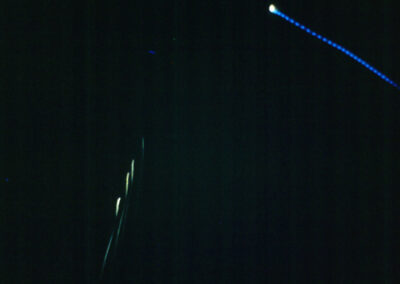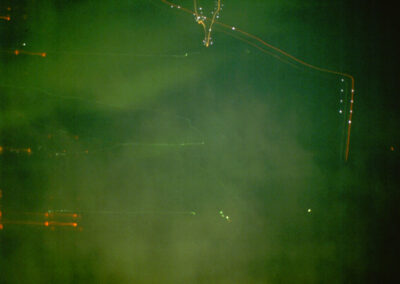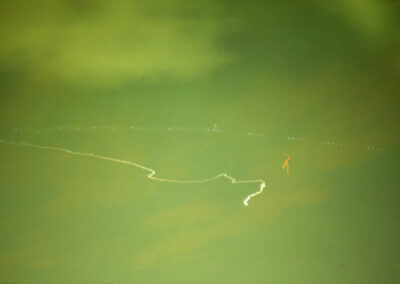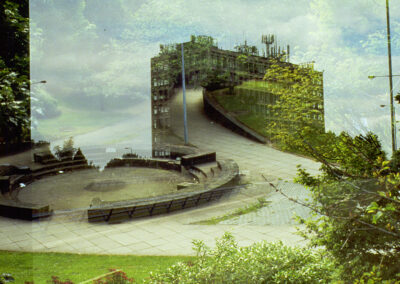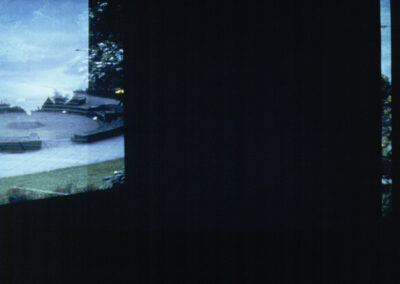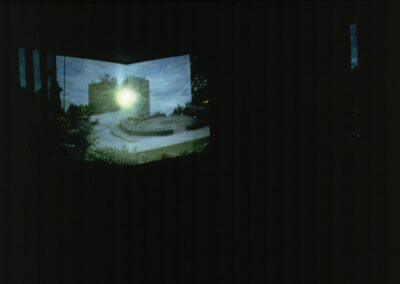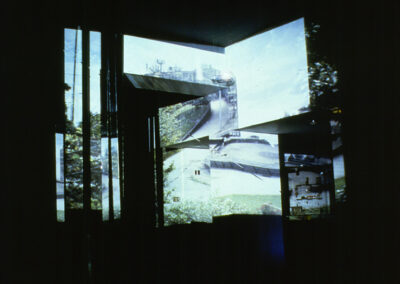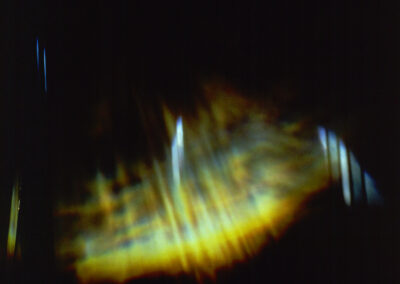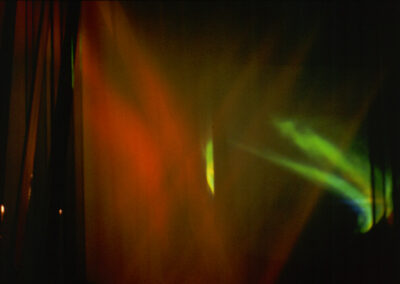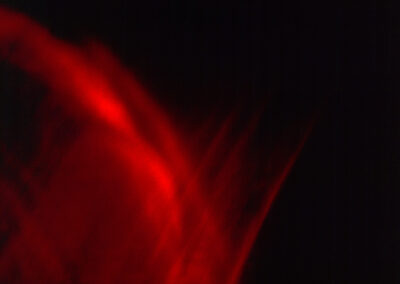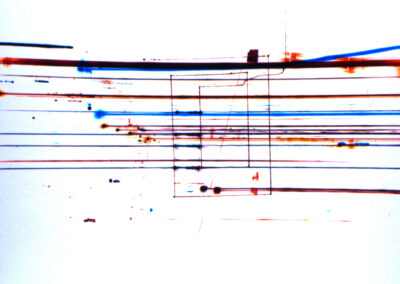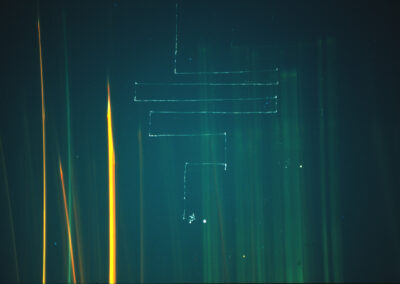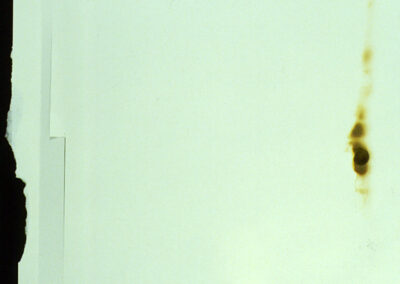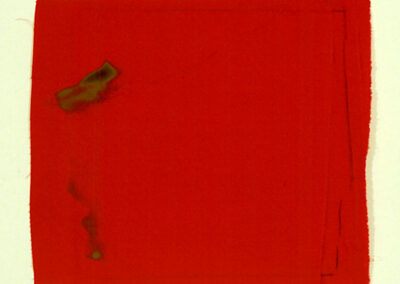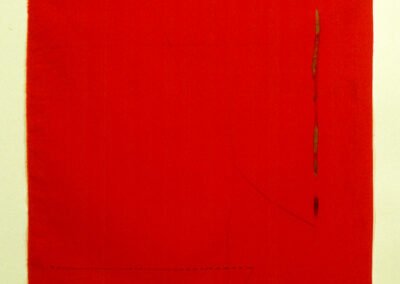Our next Artist You Need To Know is Joan Frick. Frick (1942 – 2011) was born in Toronto and the majority of her artistic career took place within that cultural community. She was a graduate of École des Beaux-Arts de l’Université de Montréal with a Master of Fine Arts, avec Prix, in 1963.
Her own words: “Of pertinent and long-standing value to my maturity as an artist are my continued studies in physics, mathematics and astronomy in addition to art, its masters and concepts, and my design experience in architecture and urban planning.”
In her artwork, Frick “takes the technological principles of still film photography for a creative alternative ride with her handheld camera drawing lines in its space. Shooting her composition at the same time creating it – as directly as pen-nib to paper – Joan Frick draws her lines with a point of non-static light in the dark, moving her camera at will to form the lines, various in length, colour, angle and sweep that compose her art.” (from Scotiabank Contact Film Festival)
Frick’s innovative artworks were recently featured in PhotoED Magazine. From their article about her work and aesthetic: “Joan Frick could easily be mistaken for a photographer. She used a handheld camera, created prints, used film to form her art, and worked extensively with light. However, her creative process differed from that of a traditional photographer, although it did involve drawing with light and employing the use of photographic technology to create unique images.
Her early work incorporated mediums such as fire, canvas oils, and Plexiglas. Later in her career she utilized photographic techniques to draw and create images. Cameras, prints, and other implements associated with photography entered Frick’s creative process around 1983. Before this, she had extensively used light that was channeled, refracted, reflected, and otherwise manipulated to create installations that were a mixture of sculpture, drawing, and architecture.
These “4D Installations” filled studio rooms with various forms of light that immersed viewers. The non-static light in the installations changed with the weather and the Earth’s rotation, creating a “multidimensional” experience. The installations were received with criticism from traditionalists who scoffed at the fact that her shows did not feature “pictures on a wall.” Her later images attracted criticism too; “That’s not possible,” one viewer said after looking at one of Frick’s “2D Light Line Drawings.” The viewer then left the gallery in which Frick was exhibiting.” You can read more of that article here.
Her work can be found in the following collections: Art Gallery of Ontario; Art Gallery of Peterborough; Canada Council Art Bank; Carleton University; McKenzie Art Gallery; University of Toronto; and the Vancouver Art Gallery. She was also awarded grants from the Ontario Arts Council and the Canada Council.
Frick had exhibited widely since 1969, both in Canada and beyond. Important solo exhibitions have been mounted at the Fran Hill Gallery, Centre for Contemporary Canadian Art, York University, Glendon Gallery, Art Gallery of Peterborough, Art Gallery of Northumberland, Art Gallery of Hamilton, Art Gallery of Algoma, Kitchener-Waterloo Art Gallery, Agnes Etherington Art Centre, Wynick-Tuck Gallery and Gallery 44.
“I used to look down my nose at using photography,” Frick once said, until “I discovered I could draw with my camera.”
Much more of Joan Frick’s work can be seen at the CCCA database, as well as a site devoted to the artist’s work here. The excellent article about her very unique approach to photography with the sensibility of someone wanting to draw with light, from PhotoED Magazine, is here.



